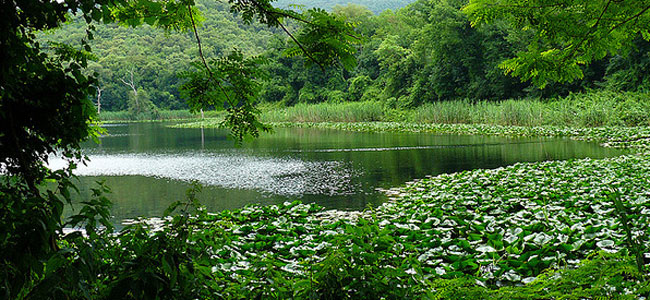"Looking at the beauty of nature is the first step to purifying the mind."Amit Ray
Often we’re so absorbed by the frenetic rhythms of the city that we forget about the green spaces that Naples and its provinces can offer, such as the nature reserve Cratere degli Astroni, that is the largest and best preserved crater in the Campi Flegrei area.
There are several hypotheses about the meaning of the term Astroni, one of which derives the origin of the name from the word Sturnis, due to the presence of flocks of herons in the area; some believe that it derives from Sterope, a Cyclops who, according to mythology, lived in this area. According to another hypothesis, Astroni was born from the term Strioni or sorcerers who, realized their magic rituals in the crater. What we know for sure is that thanks to Alfonso I d'Argona the area will be populated with game.
In 1970 the Astroni were bought by the Campania region but only in 1992 the Oasis was officially open to the public.
Why is the nature reserve of the Astroni Park so special?

The fauna of the Astroni Nature Reserve

Obviously, to such a diversified vegetation corresponds a fauna characterized in which the most conspicuous animal presence is thath of the birds, there are about 130 species that have national and international importance, so that they are protected at European leve under the name SPEC (Species of European Conservation Concern).
The great spotted woodpecker has been chosen as the symbol of the Oasis, following a project of introduction occurred in 1998, we find in the Oasis also the Ferruginous duck, one of the rarest ducks in Europe, which now represents a stable presence and which has found in Lago Grande a suitable site for nesting. Due to the presence of the ponds are present also specimens of amphibians and five types of snakes, very ample it appears to be the population of invertebrates such as dragonflies and lepidopterans.
Despite the anthropization of the area surrounding the Astroni Nature Park, its flora has also become home to various species of mammals: foxes, moles, dormouses, musky flies, which with a bit of luck can be seen walking through the paths covered with leaves.
In this period, insted of struggling for the races to the sea and crowded beaches, a path in the heart of the most famous crater of Campi Flegrei can satisfy your desire to escape from the usual routine and breathe the uncontaminated air of vegetation that will envelop you in a cool embrance.
Information and costs:
Please note that in order to counteract the infection from Sars-Cov-2, until further notice it is mandatory to book online for all visitors, including those who access without a guided tour.
Open on the following days:
Saturday, Sunday and holidays.
Summer time From 10.00 to 20.00
Winter time From 10.00 to 17.00.
Admission is allowed within two hours before closing time.
Reservation required.
Costs:
Paleontological path to access both the path of dinosaurs and nature
- EUR 10 from 18 to 65
- EUR 7.50 children and young people aged 4 to 18; adults over 65; persons accompanying disabled people; persons from the same household with children under 18.
- EUR 4 for WWF members
- free ticket for disabled persons, children under 4 years
Nature trail
- 6 euro, adults from 18 to 65 years
- 4 euro children and teenagers from 4 to 18 years, adults over 65 years
- free ticket, WWF members, children under 4, people with disabilities.










Lascia un commento